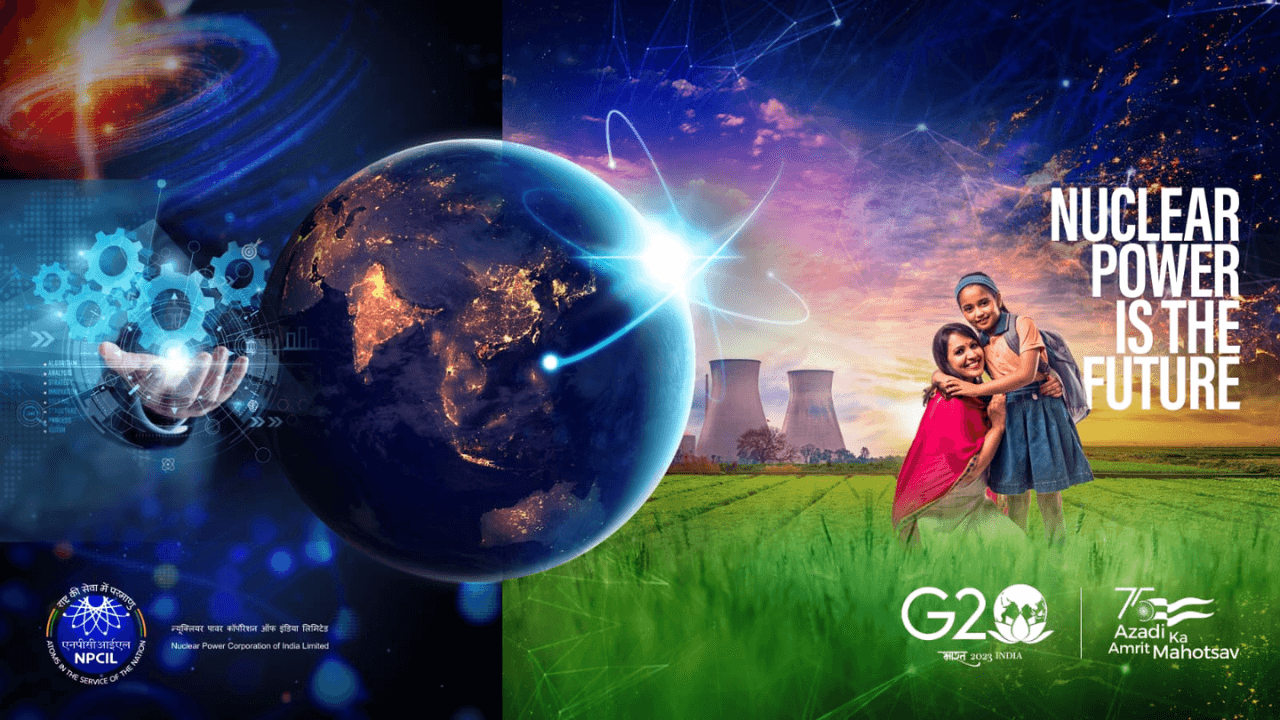Prime Minister Shri Narendra Modi has praised scientists and engineers for reaching a significant achievement. The largest 700 MW Kakrapar Nuclear Power Plant Unit-3 in Gujarat, which is made in India, is now operating at its full 700 MW capacity. This accomplishment is a crucial step in India’s journey toward self-reliance in energy and demonstrates the country’s dedication to using its own nuclear technology.
About Kakrapar Nuclear Power Plant
The Kakrapar Atomic Power Project (KAPP) commenced its commercial operations on June 30, 2023, initially running at 90 percent capacity. However, on August 31, 2023, it successfully reached its full operational capacity.
This achievement at the Kakrapar Nuclear Power Plant showcases India’s prowess in developing and operating its nuclear power facilities independently. The Nuclear Power Corporation of India Limited (NPCIL) has played a leading role in this endeavor.
Under NPCIL’s guidance, two 700 MW pressurized heavy water reactors (PHWRs) have been constructed in Kakrapar, Gujarat. Alongside the existing two 220 MW power plants, the addition of the new 700 MW unit significantly bolsters India’s nuclear power generation capacity.
Future of Nuclear Power in India
- The Nuclear Power Corporation of India Limited (NPCIL) is currently constructing one more 700 MW pressurized heavy water reactors (PHWRs) at the Kakrapar Atomic Power Project (KAPP) in Gujarat, where two 220 MW power plants are also located.
- NPCIL has plans to build a total of sixteen 700 MW PHWRs across different locations in India, and the necessary financial and administrative approvals have been granted.
- Construction work is underway for 700 MW nuclear power plants at Rawatbhata in Rajasthan (RAPS 7 and 8) and Gorakhpur in Haryana (GHAVP 1 and 2).
Additionally, the government has given approval for the construction of 10 indigenously developed PHWRs in fleet mode at four different locations – Gorakhpur in Haryana, Chutka in Madhya Pradesh, Mahi Banswara in Rajasthan, and Kaiga in Karnataka.
What is Nuclear Energy?
Nuclear energy is the energy released when atoms are split apart. This process is called nuclear fission. Nuclear energy is used to generate electricity in nuclear power plants.
- The fuel used in nuclear power plants is uranium. Uranium is a naturally occurring element that is found in rocks all over the world.
- The process of nuclear fission is used to generate heat in a nuclear power plant. The heat is used to boil water, which turns into steam and drives a turbine to generate electricity.
- Nuclear power plants are very safe. There have been only a few accidents in the history of nuclear power, and these accidents have been relatively small.
- The waste produced by nuclear power plants is radioactive. This means that it is harmful to human health. However, the waste can be disposed of safely in deep underground repositories.
Advantages of Nuclear Energy
- It is a low-carbon source of energy. Nuclear power plants do not produce greenhouse gases, which contribute to climate change.
- It is a reliable source of energy. Nuclear power plants can operate 24 hours a day, 7 days a week, regardless of the weather.
- It is a secure source of energy. Nuclear power plants are not vulnerable to terrorist attacks or natural disasters.
Disadvantages of Nuclear Energy
- The cost of building and operating nuclear power plants is high.
- There is the risk of accidents, such as the Chernobyl disaster in 1986.
- The waste produced by nuclear power plants is radioactive and must be disposed of safely.
Overall, nuclear energy is a controversial source of energy. It has both advantages and disadvantages. However, it is a potential option for reducing greenhouse gas emissions and meeting the world’s energy needs.
What is a Pressurized Heavy Water Reactor (PHWR)?

A Pressurized Heavy Water Reactor (PHWR) is a type of nuclear reactor that uses heavy water (deuterated water, D2O) as its coolant and moderator. PHWRs frequently use natural uranium as fuel, but sometimes also use very low enriched uranium. The heavy water coolant is kept under pressure to avoid boiling, allowing it to reach a higher temperature (mostly) without forming steam bubbles.
PHWRs are a type of CANDU reactor, which was developed in Canada. The first PHWR was the Douglas Point reactor, which was built in Ontario, Canada in 1962. PHWRs are now in operation in Canada, India, China, Pakistan, South Korea, and Argentina.
Advantages of PHWRs
- They can use natural uranium as fuel, which is less expensive than enriched uranium.
- They are relatively safe, as they do not use high-pressure steam.
- They can be refueled while the reactor is operating, which means that they can have longer operating periods.
Disadvantages of PHWRs
- They are more complex than other types of nuclear reactors.
- They are more expensive to build.
- They produce more tritium than other types of nuclear reactors.
Overall, PHWRs are a safe and efficient type of nuclear reactor. They are well-suited for countries that do not have access to enriched uranium
- Weekly Current Affairs 2025 PDF For Bank, SSC, UPSC Exams
- Unsung Heroes of India: 10 Unknown Freedom Fighters You Should Know
- 26 December Current Affairs 2023 in English
- Daily Current Affairs 2025, Check Today’s Current Affairs
- April Month Current Affairs 2024, Download PDF
- June Month Current Affairs 2024, Download PDF

Hello, I’m Aditi, the creative mind behind the words at Oliveboard. As a content writer specializing in state-level exams, my mission is to unravel the complexities of exam information, ensuring aspiring candidates find clarity and confidence. Having walked the path of an aspirant myself, I bring a unique perspective to my work, crafting accessible content on Exam Notifications, Admit Cards, and Results.
At Oliveboard, I play a crucial role in empowering candidates throughout their exam journey. My dedication lies in making the seemingly daunting process not only understandable but also rewarding. Join me as I break down barriers in exam preparation, providing timely insights and valuable resources. Let’s navigate the path to success together, one well-informed step at a time.






